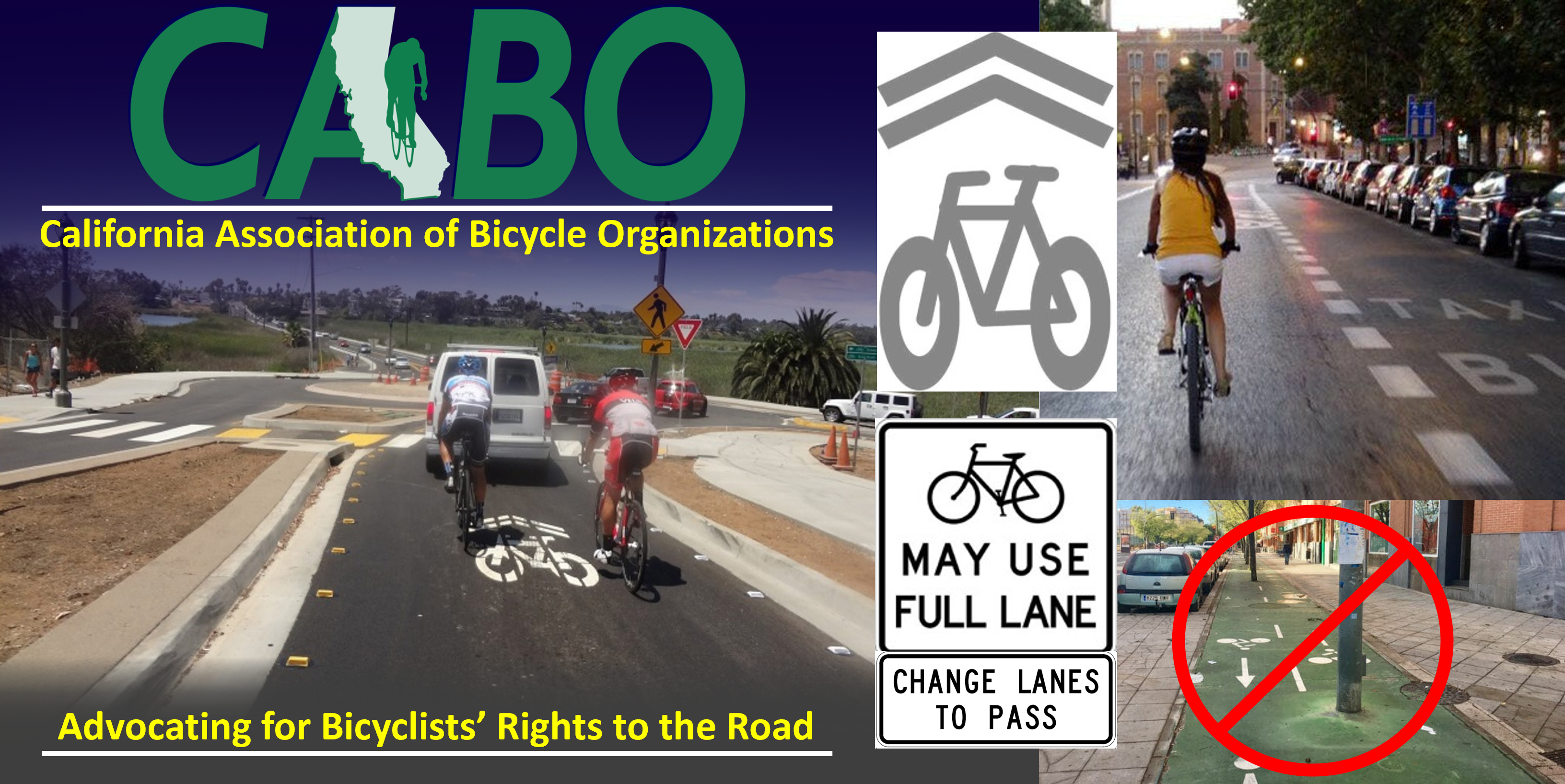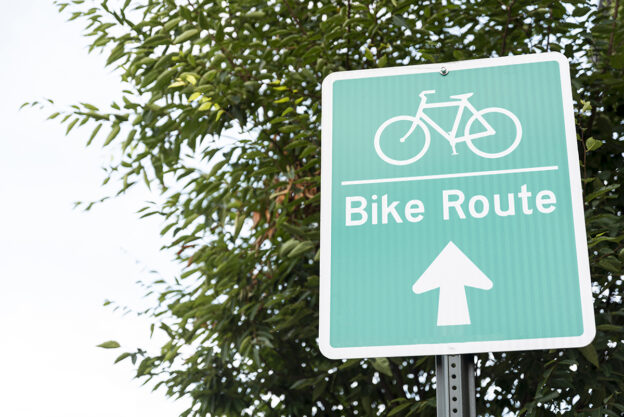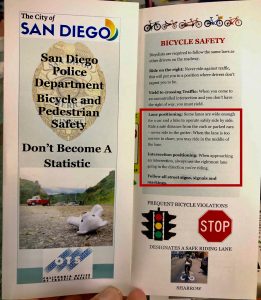CABO President Jim Baross provided the following to inform people about his qualification as a nominee.
League members voted to install Jim to the League Board.
To join the League and thereby be eligible in the future to cast a vote, visit www.bikeleague.org/join.
……..
I, Jim Baross CABO President, am offering to serve on the League Board to promote my personal goal; to “help save the world by and for bicycling.” By that I mean that more and better bicycling can improve our world in several areas – reducing dependence on a fossil-fuel sourced economy, reducing negative traffic impacts – collisions and fatalities from motor vehicle crashes, congestion, and pollution; bringing back healthy active transportation and recreation; etc. As with the health of a “canary in a coal mine”, where there is little or no bicycling a community is at risk.
My qualifications include experiences as an instructor — Certified as an Effective Cycling Instructor 1986 (#185); — 2002, named as a League Cycling Instructor (LCI) Coach conducting more than 45 training seminars certifying more than 400 LCI including 9 Smart Cycling courses to more than 75 Calif. Highway Patrol officers in five Calif. Cities, and certifying 11 Officers as LCI.
As an advocate, I have and continue to serve on bicycling advisory committees & advocacy organizations including – Chair, Bicycle-Pedestrian Advisory Working Group for the San Diego regional association of governments 1995 to 2013; –Vice Chair, California Bicycle Advisory Committee for the State Dept. of Transportation 1992 to 2017; –Current President. California Association of Bicycling Organizations; –Board member, California Bicycle Coalition 1998 to 2011; –California State Ambassador, League of American Bicyclists 2009; — Co-Chair, California Strategic Highway Safety Plan, Bicycling Challenge Area.
1975, completed Bikecentennial transcontinental
1986, certified as an Effective Cycling Instructor by LAQ & League of American Bicyclists as a League Cycling Instructor (#185);
2002, named as a League Cycling Instructor Trainer/Coach more than 45 training seminars of League Cycling Instructors (LCI) including certifying 11 Calif Highway Patrol Officers as LCI & conducted 9 courses to more than 75 officers in five Calif. cities. In August 2018 I trained and certified 11 Calif Highway Patrol Officers as LCI.
2002 to present, League Cycling Instructor Coach for 40+ LCI training/certification seminars usually three per year, all but one in California. I have trained more than 400 League Cycling Instructors. I have conducted seminars in San Diego, San Jose, Santa Barbara, Sacramento, San Francisco, San Jose, Alameda, San Luis Obispo, Oakland, Sacramento, Davis, Morgan Hill, Fairfax, Oceanside, Bakersfield, Fresno, Los Angeles, Las Vegas, Santa Monica, and Palo Alto.
2003, completed the University of California Institute of Transportation Studies Technology Transfer Program course “Design, Implementation and Operation of Bicycle Facilities”
2014, completed “Understanding Bicycle Transportation” provided by the California Department of Transportation.
2014, accepted as Cycling Savvy Instructor for the American Bicycling Education Association
1985 to present, providing bicycling instruction as a contractor for the San Diego County Bicycle Coalition.
2011, Interim Executive Director – San Diego County Bicycle Coalition, www.sdbikecoalition.org.
1970 – 2005, Supervising Management Analyst with the City of San Diego; retired 2005
Expert Witness case experience from 2007 through 2019
Bicycling advisory committees and advocacy organizations I have served:
Former Chair – Bicycle-Pedestrian Advisory Working Group for the San Diego regional association of governments (SANDAG) 1995 to 2013. The Working Group was disbanded in 2013
Former Vice Chair – California Bicycle Advisory Committee for the State Dept of Transportation, a member of this committee since 1992 to 2017. The committee was disbanded in 2017.
Current President – California Association of Bicycling Organizations, www.cabobike.org.
Member since 1998. Currently President.
Former Board member – California Bicycle Coalition, www.calbike.org 1998 to 2011
Former California State Ambassador – League of American Bicyclists, www.bikeleague.org, 2009
Co-Chair – California Strategic Highway Safety Plan, Challenge Area 13, Improving Bicycling Safety; since it began through the present
Current Board member and former Executive Director – San Diego County Bicycle Coalition
Former Chair – Normal Heights Community Planning Group 2006 to 2018
Conferences, seminars and similar events at which I have attended and/or presented bicycling information and training:
Speaker/Presenter, San Diego Bicycle Summit 2018, San Diego CA
Attendee to several League of American Bicyclists National Bike Summits including 2019
Attendee, ProWalkProBikeProPlace Conference, 2014 Pittsburgh, Penn.
Speaker/Presenter, Calif. Association for Coordinated Transportation, “Working Together:
Bicycles & Transit” May 2014
Speaker/Presenter, Scripps Hospital Trauma Section, “Bicycle Commuting” May 16, 2014
Speaker/Presenter, Calif. Office of Traffic Safety Summit “Lawful and Effective Bicycling” 2011
Attended Velo Mondial, Copenhagen, 2010 and Amsterdam 2000
Speaker/Presenter, Calif. Office of Traffic Safety, Summit “What to do about all these bicycles in Traffic” 2009
ProWalk-ProBike Conferences, Seattle WA, 2008
Presenter, California Strategic Highway Safety Plan Summit, Anaheim 2008
Presenter, Walk/Bike California Conferences, Oakland 2003, Ventura 2005, Davis 2007
Attendee/Speaker, League of American Bicyclists, Bike Education Conference, Wisconsin and New York City, 2002 & 2007
Attendee, League of American Bicyclists, National Bike Summit, Washington, DC 2006, 2008, and 2011
Presenter, Safety N Kids, Conference, “Children Learn Best by Good Examples From Those They Trust” 2006
Speaker, ITE Conference, “Engineering for Bicycling, From a Bicyclists Point of View” Dana Point, Calif. 2006
Speaker “Autovation” conference, San Diego 2005
Speaker/Presenter, Calif. Office of Traffic Safety’s Summit “A Vision for Roads to Traffic Safety”, 2000
Co-Chair, California Strategic Highway Safety Plan, Challenge Area 13 – Improve Bicycling Safety; currently serving.
Speaker, Making the Connection International Trails and Greenways Conference
Exhibitor/Speaker, Lifesavers, National Conference on Highway Safety Priorities, 2004


